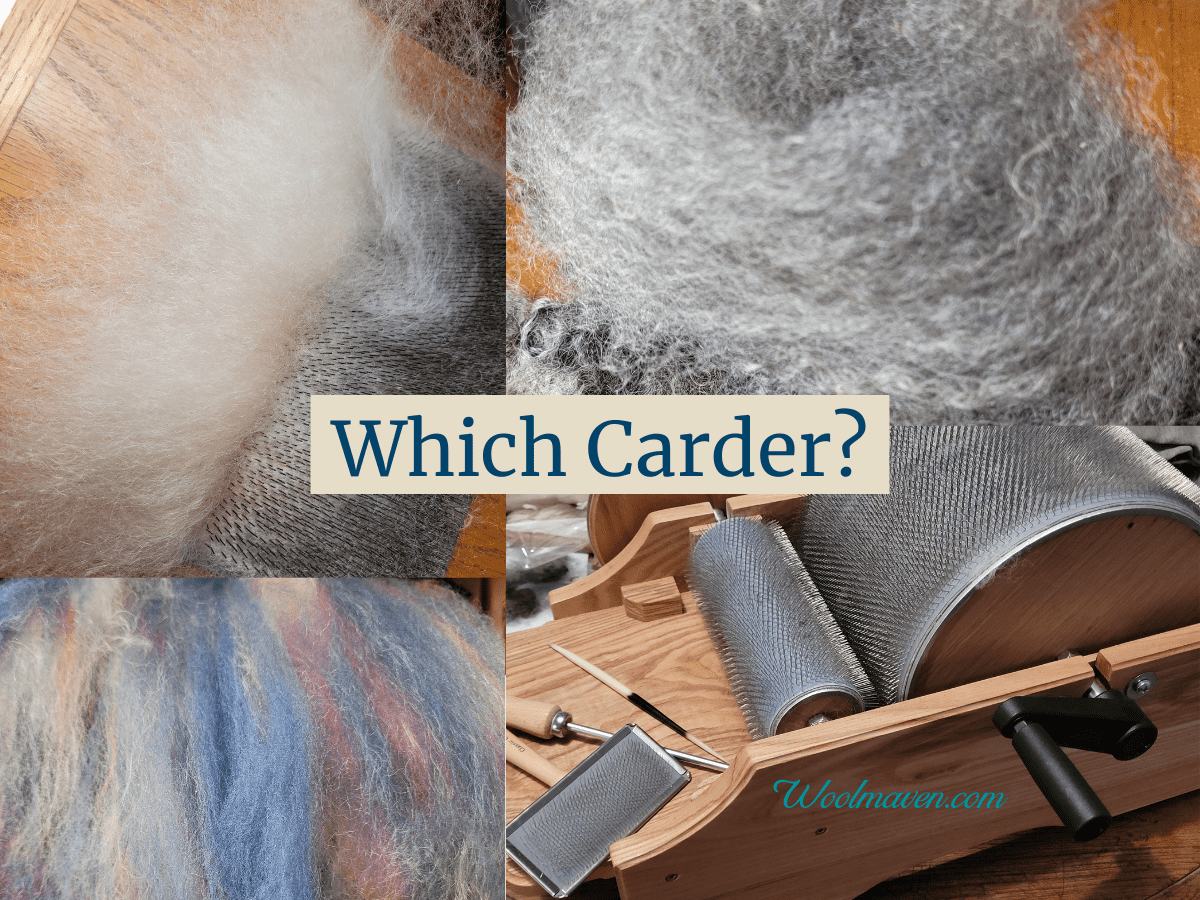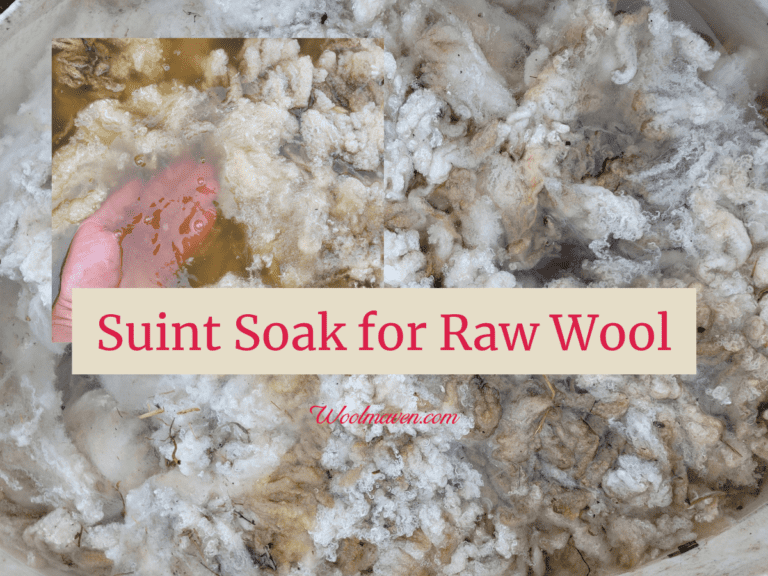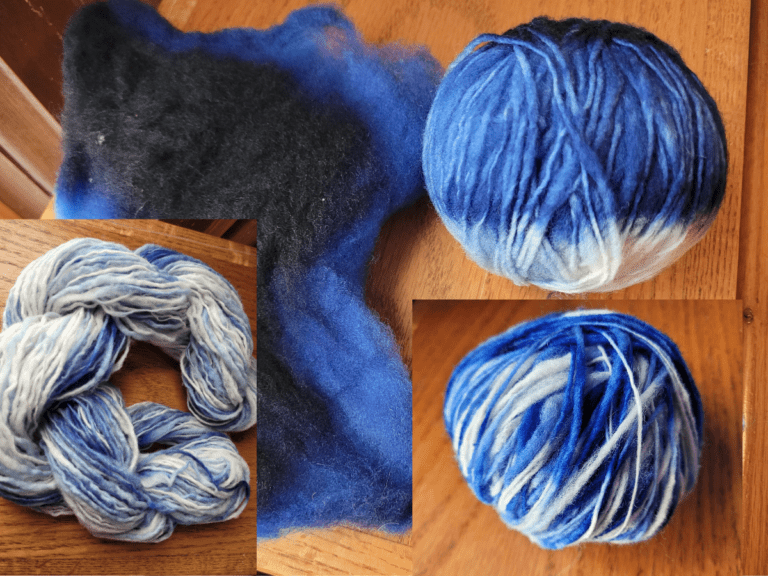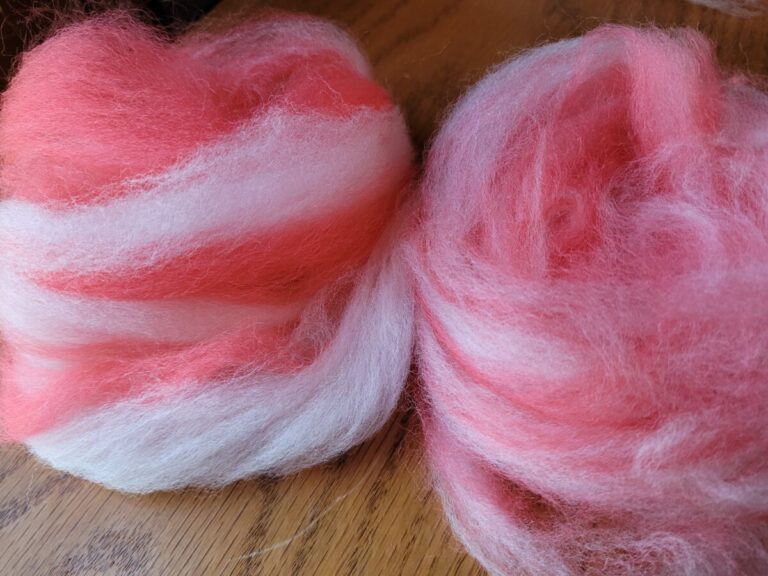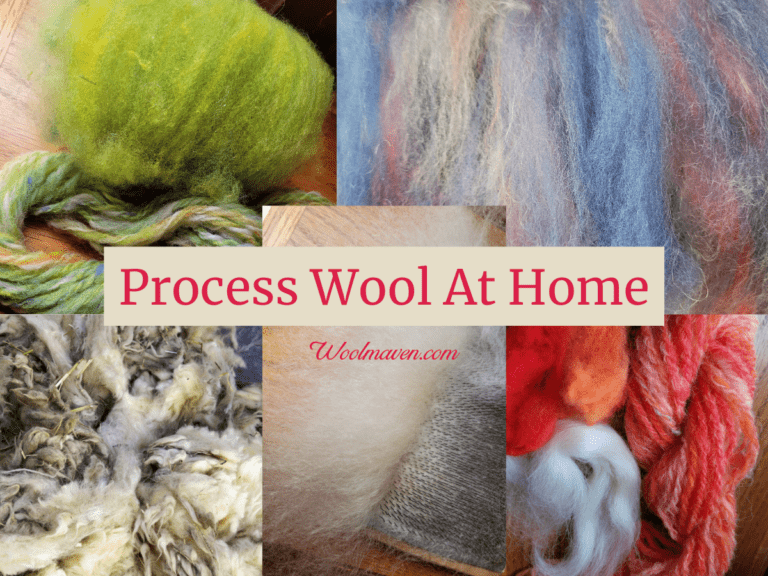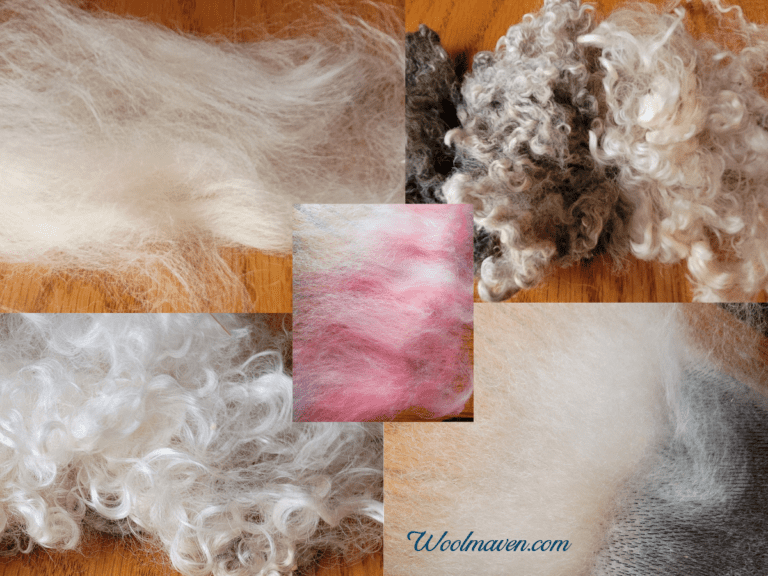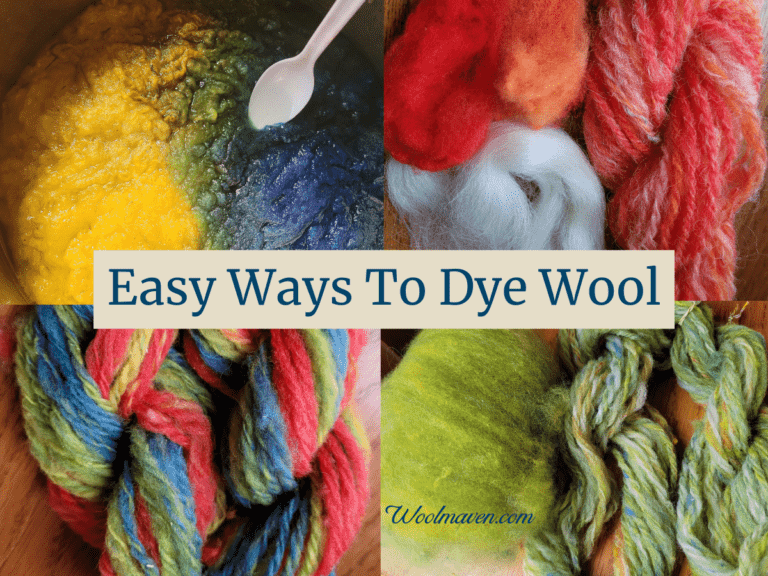Which Card Do You Use For Your Wool?
When you decide to jump into preparing your own spinning fiber, you know that you’ll need a carder to use for your wool preparation.
Now, you need to pick the one to buy and there are quite a few choices! Which carder do you need and why?
Choose a drum carder for higher volume carding, hand carders for smaller volume carding and a flick carder to open up the ends of the locks for spinning or additional carding.
Choose a carder with a higher tpi (teeth per inch) cloth for fine wools, low tpi for coarse wools and a general tpi for medium wools and/or versatility.
| Fiber | Carder |
| Fine wool | all carders, higher tpi |
| medium wool | all carders, general tpi |
| coarse or long wool | flick or drum carder, consider combs instead |
| blending colors | all carders |
| variable fibers | all carders, general tpi |
| blending fibers | hand or drum carder |
| true worsted | not carded, use combs |
| large amount | drum carder |
Picking a carder for your wool
Wool cards come with different tpi (teeth per inch) carding cloth. The higher tpi cards are used for finer wool, lower tpi cards are used for more coarse wool.
This is true for both hand carders and drum carders, both have tpi options.
Carding cloth with a tpi in the middle, which is the most common, is a general use tpi which can be used with most any wool.
The general use tpi is the best choice if you card a variety of wools and want to use just one set of cards.
Use the wool card that matches the majority of the wool that you work with.
If, for example, you use mostly fine wools, then get cards that are made with a higher tpi carding cloth, so you’ll get the best results for your wool.
If you like to experiment and card all kinds of fibers, or you are just getting started and are not sure of what you’ll like, go with a general tpi cloth first.
How To Make Roving With Hand Carders shows you how to get the fiber batt off of your cards in an easy to spin form.
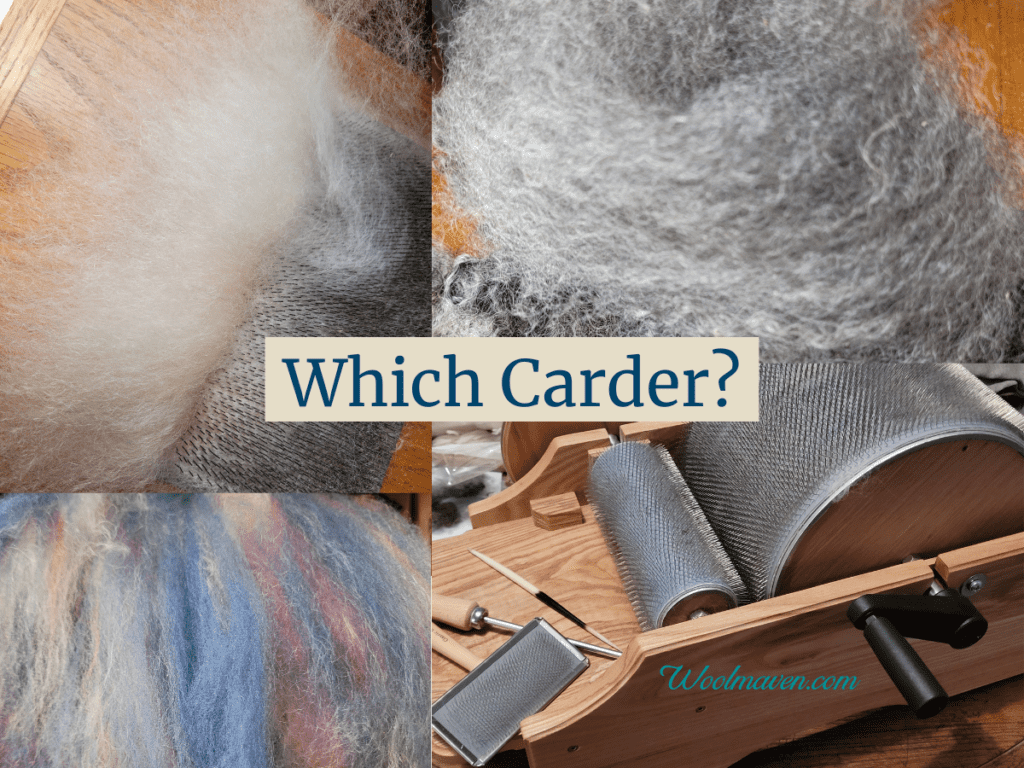
This post contains affiliate links, which means I receive commissions if you choose to purchase through links I provide (at no extra cost to you).
Hand carders for fiber preparation
Best for: smaller amounts of carding or carding when you have plenty of time
Ease of use: fairly easy, once you practice a bit to learn to use them
Cost: lower, larger cards will cost more than smaller cards
Options: flat or curved, different tpi (fine, general and coarse), different size heads
One of the most common cards to use for carding wool are hand carders, which have a flat or slightly curved head covered with the carding cloth and a handle.
Hand carders come in a variety of sizes, depending upon how much fiber you want to work with at a time.
The hand cards that I use are Clemes & Clemes Curved Back Wool Cards. I’ve had them for almost 20 years and use them for all of my hand carding.
The larger hand carders will be able to card more fiber per batt, but will also be heavier and more expensive to buy.
The smaller cards will be light weight and easy to use, but are limited on the amount of wool they can card due to the smaller carding surface.
Hand carders come in flat and curved, mine are curved.
Both are used the same way, you lightly charge the card (put on the wool) onto one card and use the other card as the working or moving card.
Hand carders are fairly easy to use and are portable. You can card your fiber while watching a video or just sitting outside enjoying the day.
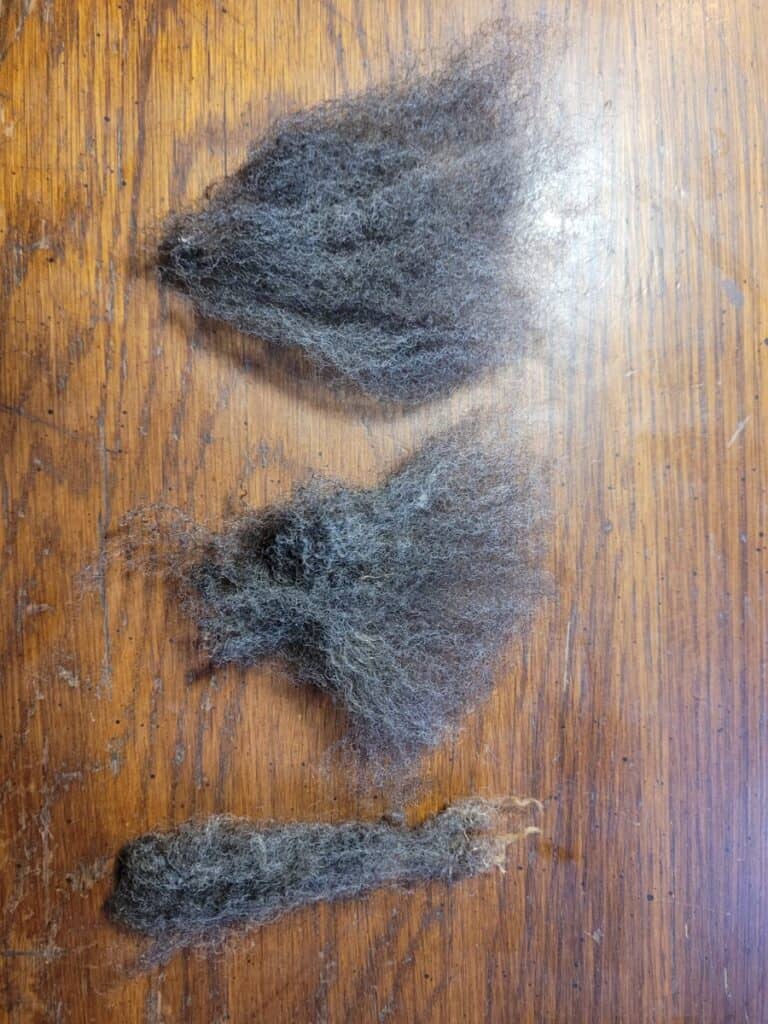
Flick carder for opening up locks
Best for: opening up ends of locks, light carding, prep tangled or wool with felted tips for further carding
Ease of use: easy to learn and use
Cost: low
Options: different brands, but very similar cards
Flick carders are an easy to use small headed card with a longer handle that is used to open up the ends of locks of wool.
Despite being called cards, flick cards do not card the wool into a cloud like you would get from hand carders. They only straighten or brush the fibers in the lock.
A flick card is used as a single card, not a pair and it is always fairly small headed compared to a hand card.
You hold the lock of wool against your leg and brush the end with a flicking motion. If both ends need flicked, turn the lock around and flick the other side.
I use my flick carder for any wool that I want to card with the hand or drum carder, but the wool locks are too tightly held together to put directly on the other cards.
By flicking the locks, I open up the ends of the wool so that the hand or drum card can do the rest and card the wool into a batt.
If I don’t flick card these locks, especially anything with felted tips, then putting them on the other cards will keep the felted end in the batt. Not what I want.
I also like to use the flick carder to open up the ends of the locks and spin as locks, without further carding.
It just depends on what I am working with and the results that I am hoping for.
If I want a more fluffy yarn, then I need to card the wool thoroughly, if I want a more well defined yarn then just flicking open the ends is the ticket.
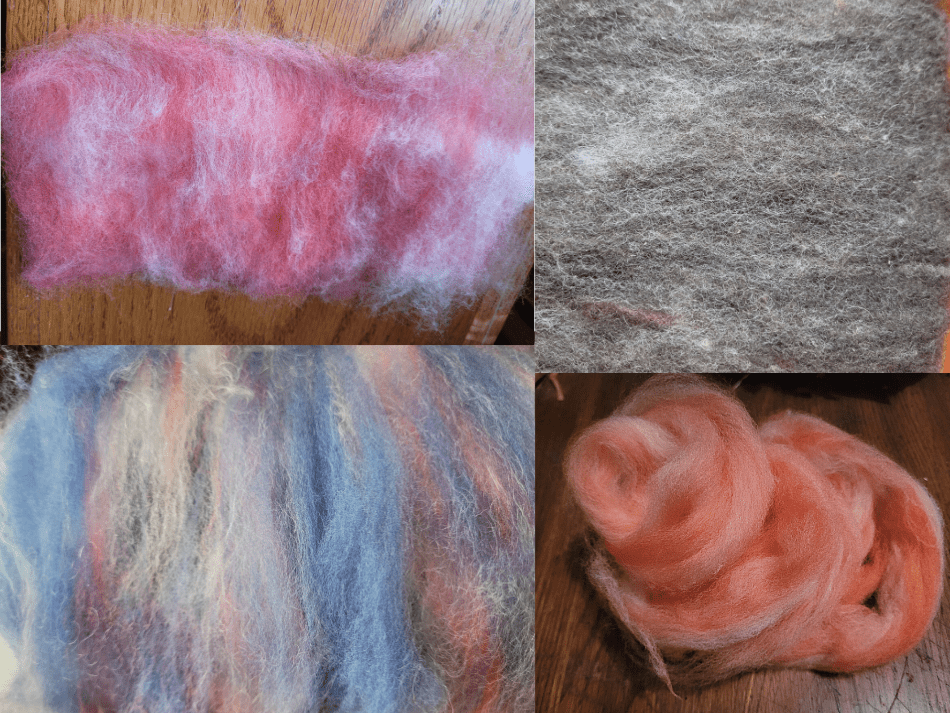
Drum Carder for larger volume carding
Best for: larger volumes of carding
Ease of use: easy to use
Cost: higher
Options: many brands, sizes of drums and carding cloth tpi
Drum carders really shine when you want to card a larger volume of wool and not have it take forever!
Drum carders can make much larger batts than hand carders, as well as blends, gradients and be used with a variety of fiber lengths, even in the same batt.
Are Drum Carders Worth It? goes over the costs and benefits of using a drum carder over other fiber preparation methods.
I was surprised at how easy it was to work my drum carder, even the first time I used it! I got a beautiful batt, right away! Drum carders are easy to use, for sure.
The potential downside of a drum carder is that it is much more expensive than other carders, around 10x the price of hand carders.
There is really no comparison between the carding ability of a drum carder compared to the carding ability of hand or flick cards, the drum carder wins!
Regarding tpi, if you primarily card fine fibers, get a fine drum (high tpi) for your carder. If you are normally using coarse fibers, go with a low tpi drum.
Otherwise, go with a more general tpi for the most versatility. If you are not sure what drum carder to look at first, check out the Ashford Drum Carder.
Combs (not cards) for true worsted
Even though this article is about carding, you should know that carding is not your only option when it comes to wool preparation.
You could also comb the wool.
Combing wool will give you a more well defined yarn, carding wool will give you a more fluffed yarn, even if you spin them the same way!
Combing is best for fibers that have some length to them, meaning that most of your shorter stapled wools are out, you’ll need to card those.
Wool with a longer staple length can be successfully combed, which is what you need when you are looking for a smooth top that will give you a true worsted yarn.
This wool comb set looks the most beginner friendly to me, and, as a bonus, they come with a holder. I purchased a different set, which are fine, but if I had it to do over again, I’d get these instead.
If you find that your yarns just have too much poof, consider changing from carding to combing and see if you get closer to the yarn you are hoping for.
In the picture above, the peach colored spirals are combed top. Notice how much smoother the fiber is than the carded batts.
I have to admit, I used to think that combing was for long wools (as in higher micron count wools, only) and not finer wools, but that’s not true!
Any wool with a longer staple length can be combed, as long as it can be lashed on and combed through, even wools that you would normally consider to be fine.
For another perspective on choosing a carder, read Tips On Selecting A Carder from The Woolery, which covers the carder options as well as explaining tpi.

